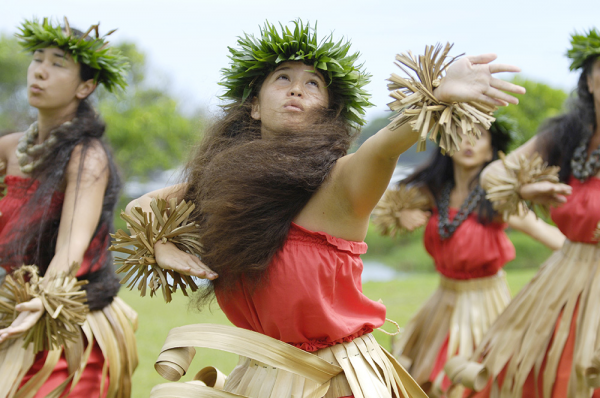Beautiful white sand beaches, flowing palm trees, glittering waves, towering volcanoes, hula dancers in leis. These are the postcard images used to represent Hawaii, images that mask the truth behind what Hawaii has become. Urban settings, sprawling resorts, hospitality-based jobs, and Western companies have begun dominating Hawaii, forcing Natives off their land and homogenizing Hawaii’s landscape.[1] But how did this happen?

Historical Native Hawaiian Land Loss
From the time Captain James Cook first arrived in Hawaii in 1778, Western cultures and ideals have dramatically affected the economic, political, and social structure of Hawaii, bending the islands and people to the will of Western imperial powers and markets.[2] In 1848, pressured by Western investors to change Hawaii’s traditional land ownership system to one that provided for private land ownership, the Hawaiian monarchy enacted the Great Mahele.[3] Through this, land was portioned off to four groups–the chiefs, the government, the king, and the people, which quickly resolved into later legislation that also allowed land to be transferred to non-Hawaiian private and business interests, as well.[4]
Growing numbers of Western landowners in the area began to amass political power within Hawaii’s government. In 1887, the Hawaiian League, a group of Western farmers formed in order to “end corruption” and reduce the power of the Hawaiian monarchy. On July 6th, they staged a coup d’état and forced the Hawaiian king to sign a restrictive constitution.[5] This constitution not only placed Hawaiian League members on the royal cabinet but also established new voting requirements that favored landowning Europeans and Americans and effectively disenfranchised Native Hawaiians as well as Asian laborers.[6] This political victory, however, did not satiate American desire for expansion into the Pacific, and many still lobbied to annex Hawaii as a United States territory.[7] On January 16, 1892, US sailors and marines landed on the island. Western cabinet members, the so-called “Committee of Safety,” deposed the Hawaiian monarch, Queen Lili’uokalani, declared martial law, and instituted a provisional government. Hawaii was annexed to the US as a territory in 1898.[8] Following Hawaii’s annexation, the Newlands Resolution ceded all “public, Government, or [Hawaiian] Crown” lands to the United States.[9]
A Unique Legacy of Colonialism
The legacy of colonialism in Hawaii has played out in problematic ways that distinguish Hawaii’s indigenous history from other places in the US and defies easy solutions. Native Hawaiians were not included in the Indian Claims Commission Act, which provided a legal framework to compensate Native American peoples for unjust land losses.[10] The Hawaiian Native Claims Settlement Act of 1975 proposed a similar model to compensate Native Hawaiians for their losses, but the act never passed.[11] In 2005, the National Government Reorganization Act sought to recognize a governmental authority for Native Hawaiians, similar to Native American tribal governments; the House of Representatives passed the bill, but it failed in the Senate and was not enacted.[12] So far, the federal government has been unable to address the unique issues of Native Hawaiian land losses; instead, non-profit groups like the Native Hawaiian Legal Corporation and the Trust for Public Land are attempting to fill the gap, committing themselves to providing legal aid and preventing further losses of land by preserving the public’s access to public land and by returning land to Native Hawaiian stewardship, respectively.[13]
The complex history of Hawaiian land ownership still affects property owners on the islands in the present. When new landowners do not educate themselves about other claims on the land they’re buying, it can result in conflict. In 2017, Mark Zuckerberg, founder of Facebook, attempted to sue hundreds of Hawaiians to prevent them from crossing through the 700-acre estate he had purchased on Kuai to access their inherited “kuleana” lands within the estate’s boundaries.[14] Although the social media tycoon later dropped his suits, pledging to work with locals in the area, Kaniela Ing, a chairman for a committee handling Native Hawaiian affairs, says Zuckerberg’s actions were “extremely poor form.”[15] Hawaiians are still grappling with the consequences of a colonialist land system that never sought to maintain or protect Native land tenure.
The Future of Native Hawaiian Land
Land losses have eroded Hawaiian Native culture and disrupted traditional lifeways over time. The rich indigenous Hawaiian culture should not, and cannot, be lost. Donations to non-profit groups dedicated to halting Native Hawaiian land loss can help—even from across state borders and over entire oceans. Supporting lawmakers who represent Native Hawaiians and their rights is also immensely helpful to the cause. Tulsi Gabbard and Ed Case are two representatives from the state who have been actively working to improve Native Hawaiian rights. In order for Native Hawaiians to see the justice they deserve, it is critical for all Americans to speak out in protest. It is time to let our voices be heard for those whose voices have been ignored for hundreds of years.
-Maya Brown-Clark, High School Student Contributor and Ariel Schnee, Program Manager, Public Lands History Center
Published 03/26/2020
[1] Panarella, Samuel J. “Not in My Backyard “Pash v. HPC”: The Clash Between Native Hawaiian Gathering Rights and Western Concepts of Property in Hawaii.” Environmental Law 28, no. 2 (1998): 473.
[2] Ibid., 472.
[3] Ibid., 473-474.
[4] Ibid, 474.
[5] Levy, Neil M. “Native Hawaiian Land Rights.” California Law Review 63, no. 4 (1975): 848-85. doi:10.2307/3479836. 861.
[6] Ibid., 862.
[7] Ibid., 862.
[8] Ibid., 862.
[9] “Hawaii V. Office Of Hawaiian Affairs.” Australian Indigenous Law Review 13, no. 1 (2009): 178.
[10] Ibid., 882. And S. 1011 (111th): Native Hawaiian Government Reorganization Act of 2009, govtrack.us. Accessed January 7, 2020.
[11] Ibid., 884.
[12] “Native Hawaiian Government Reorganization Act Of 2005.” Australian Indigenous Law Reporter 9, no. 2 (2005): 73.
[13] “Hawaiian Native Lands.” The Trust for Public Land. Accessed April 23, 2019.
[14] Herreria, Carla. “Land, Loss And Love: The Toll Of Westernization On Native Hawaiians.” HuffPost. June 02, 2018. Accessed April 26, 2019.
[15] Ibid.